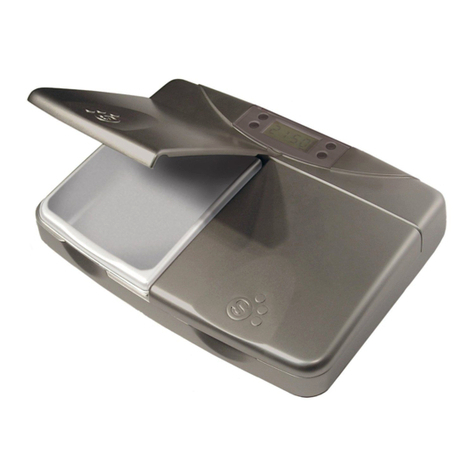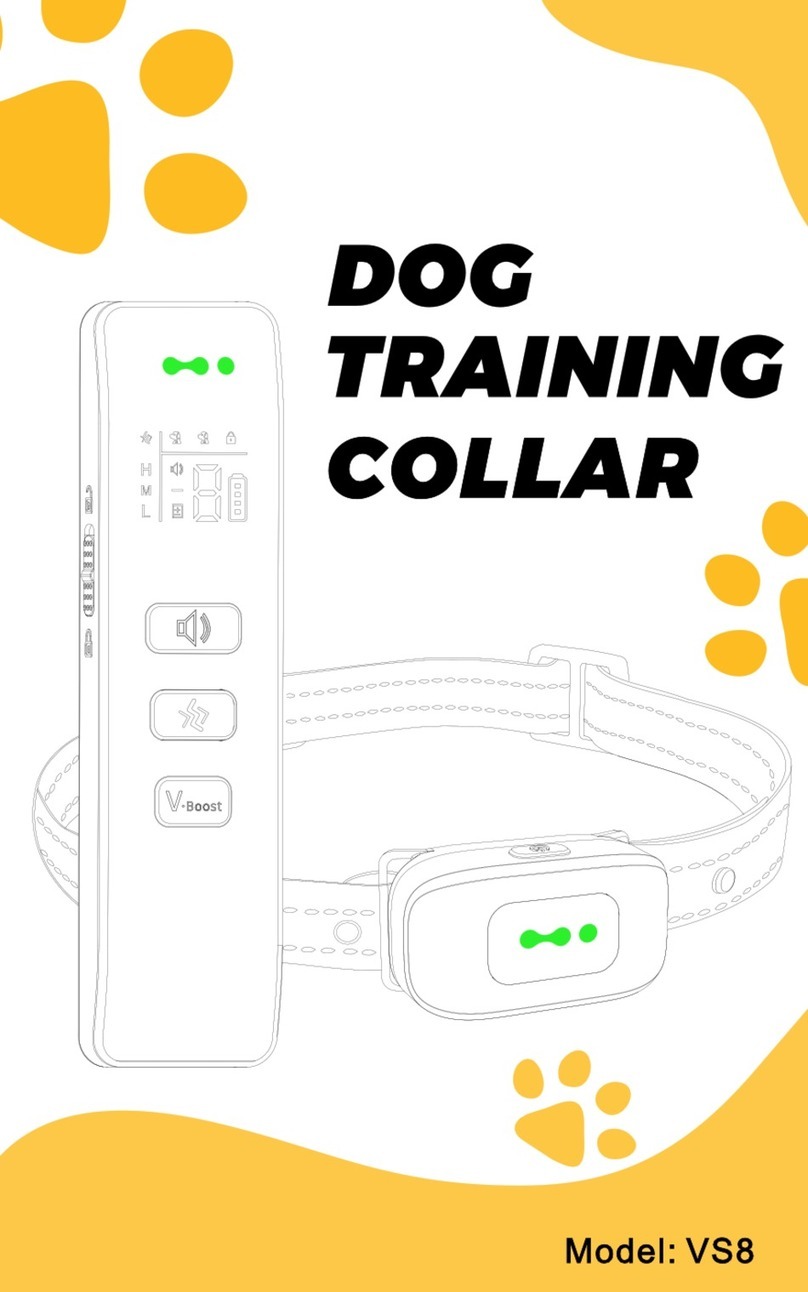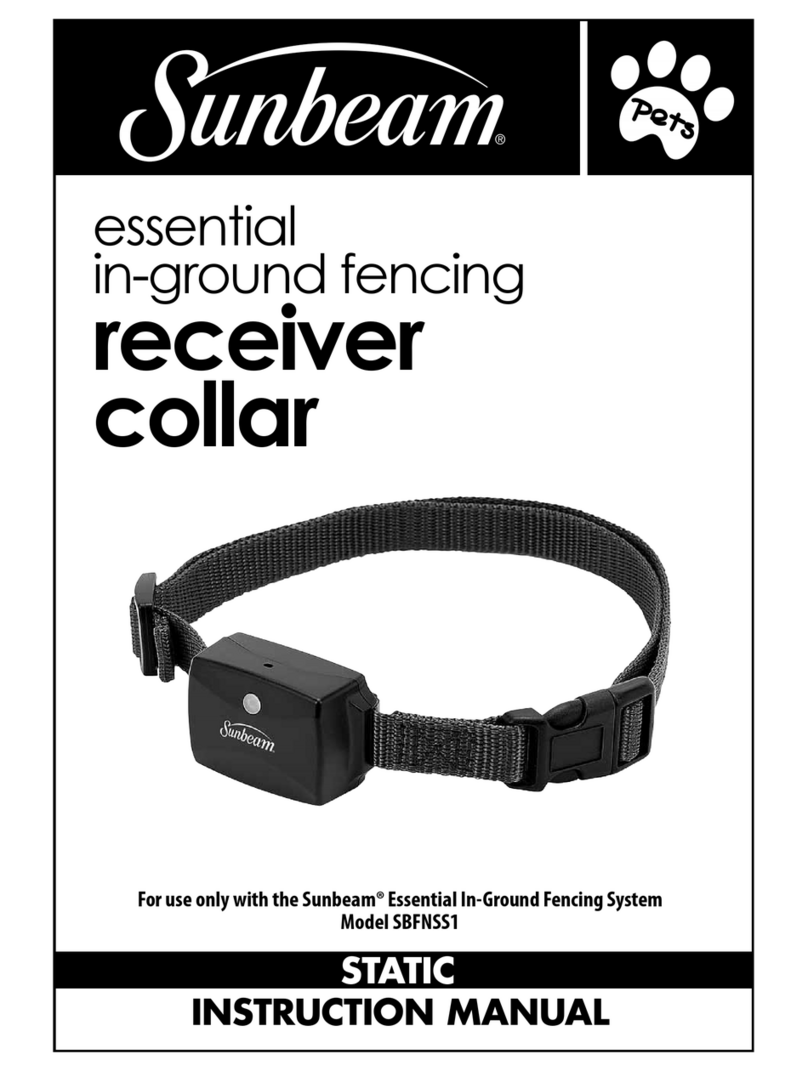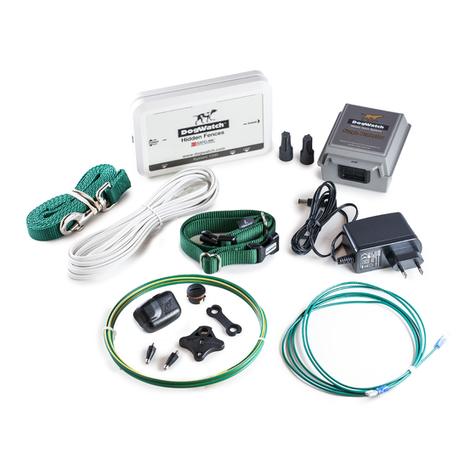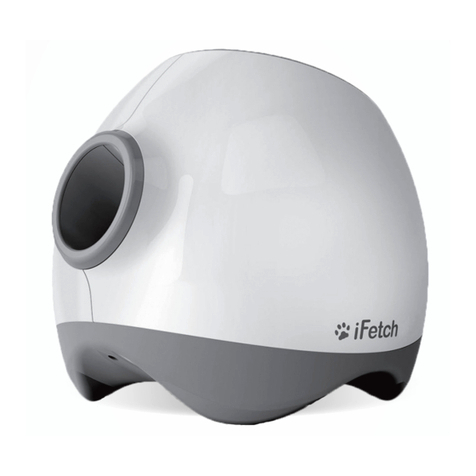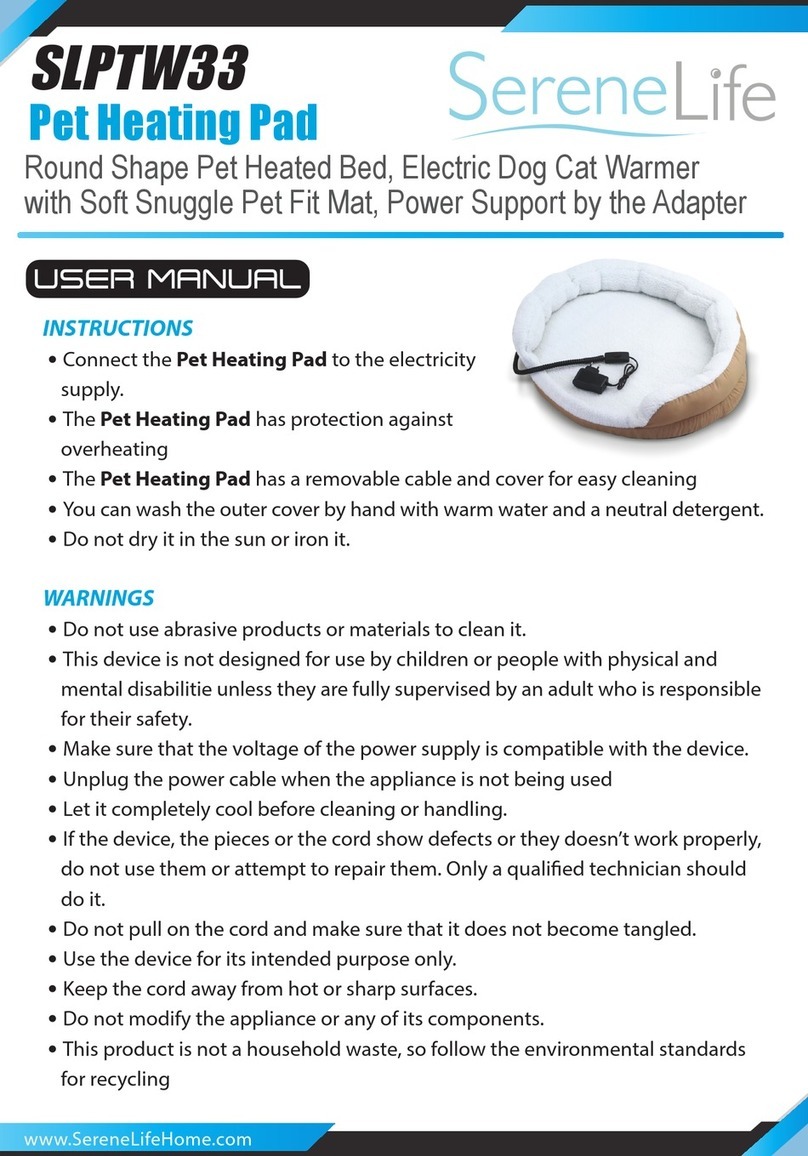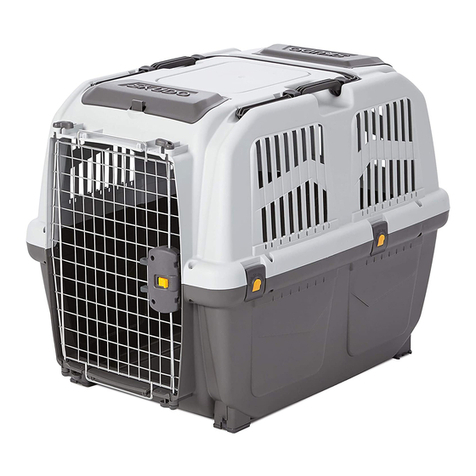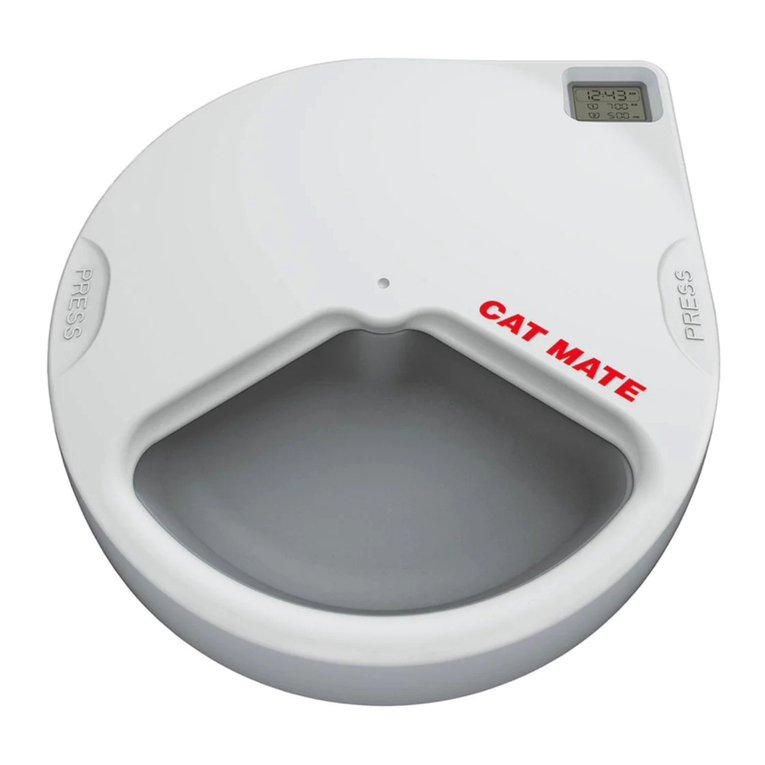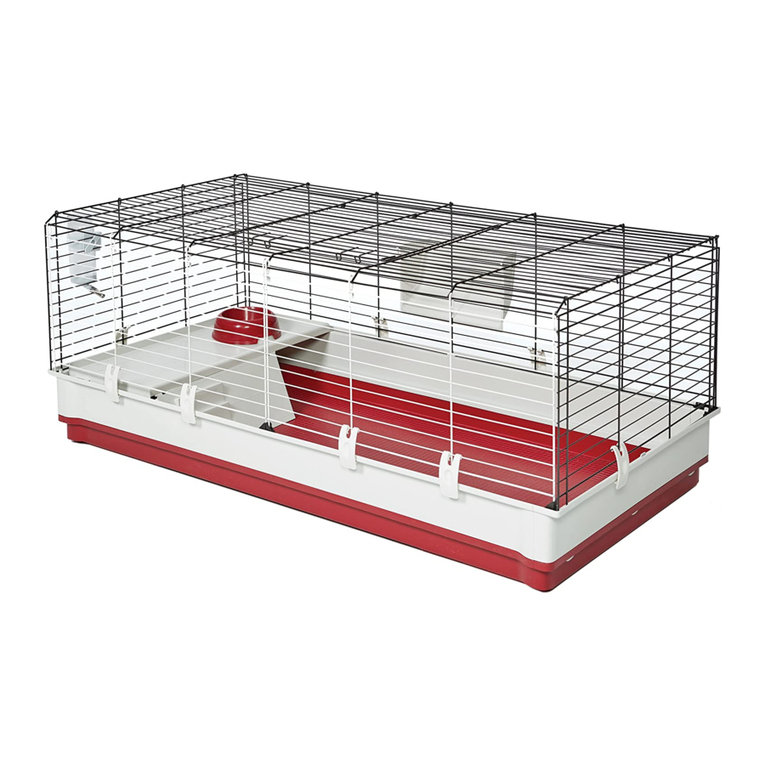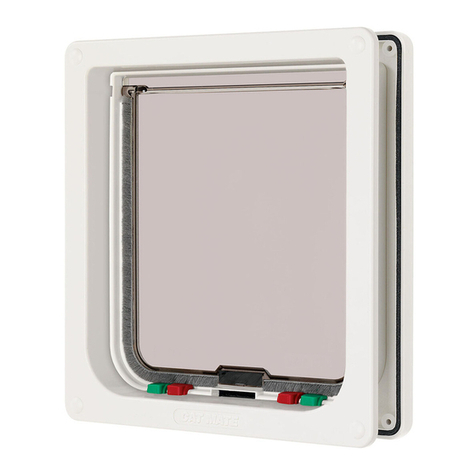biOrb LIFE User manual

BROCH0001_Life 21/7/08 16:19 Page 1

This guide will help you understand how your aquarium works and how to
create a healthy environment for your fish. Please read these instructions
carefully before filling your aquarium with water.
Aquariums are not toys, adult supervision is recommended.
Removing serial number label and/or dismantling your aquarium will
invalidate your guarantee.
Carefully remove all the contents from the box
and check. Choose a suitable location for your
aquarium and noting all the advice above, place
your aquarium on a strong and level surface.
Remember the aquarium needs a
power source within reach.
Wash the ceramic media supplied thoroughly
before placing around the filter body, ensuring
none remains on top of the filter housing.
Use only ceramic media supplied, do not
use aquarium gravel. Discard any pieces
smaller than a pea.
Connect the airline to the pump as shown and
place in a suitable position.
Positioning the pump higher than the
aquarium water level will prevent water
leakage or damage to the pump should the
one way valve fail.
Plug the pump and light unit into the separate
sockets on the transformer supplied, then plug
the transformer intothe power source and turn
on.
The pump should be on 24hrs a day.
US transformer shown.
Fill the aquarium with tap water to approximately
2”/5cm from the top and add Stress Coat, wait 24
hrs then add Stress Zyme.
DO NOT overfill the
aquarium if you intend to add
decorative items such as pebbles
as they will displace the water.
Replace the lid and light unit, leave the aquarium
running for at least 24 hours before introducing
fish.
Do not immerse the light unit in water.
1
2
3
48
7
6
5
WAIT 24 HOURS
SETTING UP YOUR AQUARIUM
Remove protective cellophane wrapper from
filter cartridge and rinse under running water.
Offer up filter cartridge to bubble tube and twist
the bubble tube in the direction of arrow
ensuring all cartridge tabs are fully locked.
Ensuring no objects are in the way, insert bubble
tube and filter cartridge assembled in step 2 into
the aquarium and lock into place by giving the
bubble tube a quarter turn.
When positioned correctly,the bubble tube and
filter will remain in place.
2’’- 5cm
AVOID
HOT AREAS
DO NOT MOVE
WHEN FULL
DO NOT PLACE ON OR
NEAR ELECTRICAL ITEMS
LL
BROCH0001_Life 21/7/08 16:19 Page 2

INTELLIGENT LIGHT
(Supplied)
LID
BUBBLE TUBE
FILTER CARTRIDGE
AIR STONE
FILTER HOUSING
CERAMIC MEDIA
THE AQUARIUM LIFE CYCLE
The cycle starts as soon as you add Stress
Zyme™to your aquarium.
The beneficial bacteria in Stress
Zyme™will start to colonise the
Ceramic Media (Supplied). These
beneficial bacteria form a vital part
of the biological filtration by
breaking down any poisonous
waste created by the fish.
Stage the waste produced by your fish
and any uneaten food will start to rot producing
Ammonia. This is extremely toxic to fish but will be gradually broken down by
beneficial bacteria in the Ceramic Media, so it’s important that only one fish is
added to the aquarium at a time and never add any more than the
recommended number of food pellets. Following this rise in Ammonia the
Nitrite level will also start increasing until the Nitrospira bacteria have time
to reproduce in sufficient quantities to remove the Nitrite. The final stage of the
cycle will see a Nitrate spike; this is the least harmful to the fish and will
reduce to very low levels over time. Monthly use of the Service Kit will keep
Nitrate to a safe level.
After 24 hours you can add the
first fish to your aquarium. The
chart will help you. Fish transferred
from an existing aquarium must
be introduced in the same way as
new fish. For every 1”/2.5cm fish
added it will take atleast 28 days
for the aquarium to cycle and the
filtration to catch up. Add at a rate
of one small fish every28 days
until maximum stock level is
reached. Too many fish too soon will create high ammonia levels poisoning
the fish. (see Aquarium Life Cycle above). It is recommended that you start with
ahardy species, consult you local aquarium store for suggestions. Non-hardy
fish such as Neon-Tetra or Blackmoors are not recommended for the first month.
Take care not to overfeed your fish and remove any leftovers after 2 mins.
Different fish have different nutritional requirements so use an appropriate food.
Small goldfish 2-3 pellets per day
Large goldfish 3-4 pellets per day
Small tropical fish 4 micro pellets each per day
3
2
1
NITROSPIRA
BACTERIA CONVERTS
NITRITE
NITROSOMONAS
BACTERIACONVERTS
AMMONIA
NITRATE
REMOVEDWITH
WATERCHANGE
2
3
1
NITRITE
NITRATE
AMMONIA
FISH WASTE
UNEATEN FOOD
& PLANT MATTER
MONTH 1 MAX
GOLDFISH 1”/2.5cm
biOrb 30L (8 gallons) 1 3
biUbe 35L (9 gallons) 1 3
biOrb 60L(16 gallons) 2 6
MINNOWS/SML TROPICAL
biOrb 30L (8 gallons) 312
biUbe 35L (9 gallons) 312
biOrb 60L (16 gallons) 6 24
ADDING AND FEEDING FISH
BROCH0001_Life 21/7/08 16:19 Page 3

Every 6 months the Air Stone in the
base of the aquarium will eventually become
blocked by calcification restricting the flow of
bubbles into the aquarium, the Air Stone
should be replaced as shown.
After 12 months the Air Pump could
become noisy and the flow of bubbles
reduced even after changing the air stone.
Replace the Air pump immediately to avoid water quality problems.
Green Water in aquariums is caused by algae growth. Some algae is
natural, but if the water quickly turns green it may be caused by too much
light, over feeding, too many fish or high levels of nitrate and phosphate
in the tap water. First reposition the aquarium to a darker area and reduce
feeding, if the problem persists, a No Algae Kit can be purchased.
Cleaning the aquarium requires care
to prevent scratching. Never use household
detergents, polishes or scouring pads to clean
the aquarium, always use a Cleaning Pad.The
outside of the bowl can be wiped with a soft
cloth or purchase a Plastic Scratch Remover
&Polish kit.
Every 4 to 6 weeks replacement of
the dirty filter cartridge and a 30% water
change is essential to reducenitrate and
phosphate pollution in the water.
The Service Kit contains a new filter
cartridge, water chemicals, cleaning pad
and instructions.
ACleaner Pump (not supplied) is a
convenient way to remove debris and
siphon out the water. After setting up
the aquarium never use tap water to
clean the ceramic media, this will kill
biological filtration.
This is also a good time to check that the
One Way Valve is working correctly.
Disconnect the airline from the air pump
(1) lower the airline to below the
aquarium water line (2). If water leaks
into the airline, fit a new One Way Valve
by cutting the air line and inserting the
valve into the ends of the airline (3) observing the correct orientation to
ensureair flow.
CARING FOR YOUR AQUARIUM
AQUARIUM TASK FREQUENCY
S30 (30L/8GAL) Replace Filter 6 wks
Change Water (30%) 3 wks
P45 (35L/9GAL) Replace Filter 6 wks
Change Water (30%) 4 wks
P60 (60L/16GAL) Replace Filter 4 wks
Change Water (30%) 4 wks
1
✔
✘
2
AIR FLOW
3
General maintenance
BROCH0001_Life 21/7/08 16:20 Page 4


SERVICE KIT
CLAMSHELL
AQUARIUM SCULPTURE
CORAL
AQUARIUM SCULPTURE
PEBBLES
AQUARIUM SCULPTURE
NO ALGAE FIRST AID SCRATCH REMOVER
TRANSFORMER
AIR STONES
ONE WAYVALVE
CLEANER PUMP
CLEANING PADS
HEATER STAND
EASY PLANT
AQUATIC TOPIARY
AQUATIC COLOR BALL
(SMALL) 3 PACK MIXED
DIGITAL
THERMOMETER
HALOGEN LIGHT BULB
Arange of easy to use products are available from your biOrb dealer to help you maintain a healthy aquarium.
AIR PUMP
TIMER
EASY PLANT
SMALL
EASY PLANT
MEDIUM
EASY PLANT
LARGE
MEDIUM
EASY PLANT
BLUE/PURPLE
MEDIUM
EASY PLANT
RED/PINK
AQUARIUM STANDS
ALGAE CLEANER
TROPICAL
HEATER KIT
AQUATIC
COLOR BALL
(LARGE)
RED,YELLOW
OR PURPLE
HALOGEN LIGHT KIT
LED LIGHT KIT
ACCESSORIES
CERAMIC MEDIA
BROCH0001_Life 21/7/08 16:20 Page 6

BROCH0001_Life 21/7/08 16:20 Page 7

Can I use a longer airline?
Air line longer than 3-5 metres will require a larger air pump. Attach new airline
to the pump end of the existing airline, not the aquarium end. Trim the end of
the tube you detach from the pump and use either a straight airline connecter,
or better still a one way valve.
Why am I getting fewer bubbles?
Ifyou have noticed that there are fewer bubbles you may need to change the air
stone. Alternatively if you have just changed the filter cartridge, air from the
sponge may be trapped inside the cartridge. Twist the bubble tube and lift one
side of the filter cartridge slightly to allow the air to escape.
What happens if the pump stops?
It is advisable to keep a spare air pump. Without oxygen filter bacteria will start
to die and the water may become polluted. If you have live plants remove these
from the aquarium at night so that they do not take oxygen away from your fish.
Do not feed your fish for a few days. It is advisable to test the water after a
noticeable power cut to see if water changes are necessary. After a power cut it is
essential that the air pump is raised well above the aquarium water level as per
air pump instructions.
Why is the pump noisy?
Noise from the pump is usually caused byvibration against the surface it is on.
Place the pump on a softer surface like a mouse mat or hang the pump up. Make
sure the airline is pushed into the air pump as far as it will go.
Wherecan I buy Service Kits and other biOrb parts?
If you have access to the Internet check our stockists page for a list of retailers
near you or online suppliers. If you wish to call us, you can find the telephone
numbers on the reverse of this manual.
Why have real plants?
There are several benefits to growing real plants in the aquarium. Plants feed off
nitrate and phosphate, helping to keep levels low and algae at bay. They also
provide hiding places for fish, add interest to their environment and a tasty snack
for some fish.
What type of plants?
Unless you convert your aquarium for plant growth some species can be very
difficult togrow. Trial and error is often the only way to find good plants for
your aquarium. Try inexpensive bunches of hardy plants to begin with.
Why do I have to change the filter cartridge so often?
The filter cartridge works like a waste bin, after a time this will become ‘full’. By
regularly changing the cartridge everything it has absorbed is removed from the
aquarium, just like taking your household waste bin out to be collected. For
optimum filtration the filter cartridge should be replaced every 4-6weeks.
Can I wash the sponge?
Ifthe sponge gets dirty before a change is due it can be washed. However the
chemicals in the filter cartridge only remain ‘active’ for 4-6 weeks. Therefore the
cartridge should be replaced.
Does the filter contain activated carbon or Zeolite?
The filter cartridge contains activated carbon and resins that should be
removed before using aquarium medications. Leave the sponge in the
cartridge to continue trapping dirt and replace with a new cartridge when
the treatment period is over.
Do I have to keep the ceramic media provided?
The ceramic media provides essential biological filtration. It is your fish’s toilet,
bacteria will colonise the media to consume toxic fish waste making the water
safer for your fish to live in. Without this the water would become very polluted
very quickly.
Can I put aquarium gravel in the aquarium?
Itis not recommended toput gravel, sand or small stones in the biOrb. Gravel is
likely to block filtration and may become lodged in the filter cartridge casing.
Will changing the cartridge kill the filter bacteria?
No. The filter cartridge provides mechanical and chemical filtration. Biological
filtration is provided by the ceramic media, so not affected by the filter cartridge.
Why do I have to keep the aquarium out of sunlight?
All round fish bowls have a magnifying effect. If placed in sunlit locations the
sun’s rays can produce a focal point of light that can scorch/burn materials and
possibly cause fire. Strong daylight can encourage excessive algae growth and
cause temperature fluctuations within the aquarium making life uncomfortable
for fish.
Can a heater be added to the aquarium to make it tropical?
A50W heater can be added to the aquarium with the aid of a biOrb/ biUbe
heater stand.
FREQUENTLY ASKED QUESTIONS
BROCH0001_Life 21/7/08 16:20 Page 8

Hardy fantail goldfish are a good choice for biOrb/biUbe aquariums. Fantail
goldfish have long tails that look like two tails joined together. Their bodies are
short and round. Avoid fancier varieties such as bubble eyes and pearl scales
which can be harder to care for or Orandas that can grow too big.
Common goldfish are fast swimming and boisterous, they shouldn’t be mixed
with fantail goldfish and are better suited to very large aquariums or ponds.
Common goldfish, such as comets and shubunkins usually have a single flat tail
and cigar shaped bodies.
Smaller cold water fish such as white cloud mountain minnows make good first
fish, a shoal of six can be mixed with fantail goldfish.
Temperate fish can be kept without a heater providing you use a thermometer to
check that the temperature in the aquarium does not drop below 19°C (17°C at
night). These can include danios, some guppies and platys amongst others. Only
buy fish that have already been acclimatised to cool water. These shouldn’t be
mixed with goldfish.
Do not keep ‘bottom feeding’fish, such as common pleco, loach or catfish in
biOrb/biUbe aquariums. The ceramic media used for biological filtration is
unsuitable for them. Many of these species also grow very large.
There is a large variety of small tropical fish that can be mixed together or kept
as a large shoal of one species. As with any pet, before buying you should do a
little research into your chosen fish from the wealth of fish books or web sites
available.
Check that the fish you buy will be compatible with your existing fish and/or the
fish you plan tohave. They should be healthy and alert, scales should be smooth
and not damaged or infected.
With fantail goldfish in particular check that they are swimming easily (not
sideways or up-side down) and that their tails are not held at an abnormal angle.
Don’tbe afraid to reject a fish that you do not think is healthy. If you are not
completely happy with it don’t buy it.
Getting your new fish home -Moving to a new aquarium is a very stressful
experience for fish. This can be too much for them and some do not survive. By
planning your purchase and taking care you can minimise this stress to give your
fish a better chance of enjoying their new home.
Alwaysmake surethatthe fish you buy can be taken straighthome toyour
aquarium. When travelling, keep the fish steady, secure and out of direct
sunlight. The fish bag should be covered with a paper bag or box to reduce stress
and help tropical fish maintain their temperature.
At home, open the bag and roll down the sides like a sock. Equalise the
temperature in the bag and the aquarium by floating the open bag on the water
surface for 30 minutes. Carefully tip the bag to allow the fish to swim out. Try to
minimise the amount of water from the bag entering the aquarium. Leave the
aquarium light off and do not feed for a day or two. Like any pet you should
research the needs of the fish you want before taking them home.
Fast growing stem plants like Elodea densa or Cabomba aquatica, often sold as
‘goldfish weed’ or ‘oxygenators’take in nutrients through their leaves rather than
roots. They will fight with algae for food and cope with well filtered aquariums.
Generally, fish like to graze on soft, bright green plants. Tougher varieties, or fast
growing plants usually withstand the attentions of fish, however some fish will
destroy any plant. Very bright green or red plants generally need more specialist
lighting in order for them to thrive. Selecting several plants of different heights
will add interest to the aquarium for you and your fish. Buy plants that are fresh
and healthy.
Do plants oxygenate the water?
During daylight hours plants use carbon dioxide and release oxygen into the
water. When it is dark however they do the opposite, this is why plants shouldn’t
be used to oxygenate aquarium water. Make sure the plants you buy are
‘aquarium plants’and not varieties sold for ponds.
Artificial plants -Plants can be difficult to grow and many people prefer to
choose artificial aquarium plants. There are many to choose from, usually made
from plastic or silk, and can look very realistic. Although they do not have the
benefits of live plants they never die and can be taken out and washed when
dirty.
Fixing plants in the aquarium -Plants areusually sold in pots or bunches;
both can restrict the growth of the plants. Pots must be removed, the substrate
used around the roots can cloud the water. Most stem plants can be kept in their
bunches as long as they are regularly taken out and trimmed.
Use the ceramic media in your aquarium to anchor plants into position. Remove
5-6 rocks, insert the plant into a gap and then place the rocks around the plant to
secure it. Single stems can be fed in-between the rocks quite easily.
Plants with good root systems, such as Cryptocornes and java fern, can be loosely
tied ontobogwood or aquarium rock with fishing line. These plants should then
grow onto the surface. This makes it easier to position the plants and lift them
out of the water.
Aquarium gardening -Most plants do not need much care. However, a little
gardening during normal aquarium maintenance will keep plants looking their
best. Dead leaves should be removed as soon as you see them otherwise they
will rot and pollutethe water. Take dead leaves off cleanly close to the stem.
Ifaplant dies creating a lot of mess care should be taken to remove all of the
plant, if left in the aquarium it may cause poor water quality and algae problems
which will be harder to rectify later on.
Whatfish can I keep?
Thereis a good choice of coldwater fish available and tropical fish can be kept if an
aquarium heater is fitted inside the aquarium. The suitability of fish depends on
their adult size, behaviour and requirements. It is recommended that you start with
a hardy species, consult you local aquarium store for suggestions. Non-hardy fish
such as Neon-Tetra or Blackmoors are not recommended for the first month.
BROCH0001_Life 21/7/08 16:20 Page 9

What to feed -Good quality prepared fish foods provide a well balanced
diet but fish will relish a variety of foods. Fantail goldfish in particular will
benefit from a varied diet. Daphnia, brine shrimp or bloodworm are enjoyed
by most fish and can be purchased either live, in frozen packets or in vitamin
enriched jelly. Only buy live food from a reputable source. Frozen foods
should be defrosted before being fed.
Pellets or flakes?
Eating flakes requires the fish to spend a lot of time gulping at the water
surface where it could swallow too much air. Pellets are easier for goldfish, for
whom swallowing air can contribute to swim bladder problems. Pellets are
also easier to administer than flakes and are less likely to cloud the water.
Smaller pellets can be purchased for tropical fish and minnows that are more
suited to their nutritional requirements. Never feed frozen or live food.
Can I give the fish treats?
Abig chunk of cucumber, courgette, blanched lettuce leaves and peeled peas
are usually well received by goldfish and some tropical fish. Leave in the
aquarium for 24-48 hours maximum, take out before they go bad. All these
foods should be fed in addition to a good quality fish pellet or flake.
How much food should I feed the fish?
Fish, especially goldfish, areprogrammed to gobble up everything they can,
far more than they need. Everything a fish eats is excreted into the water so the
more the fish eats the higher the risk of pollution becomes. A well fed
aquarium is more likely to develop poor water quality, sick fish and algae
problems.
Small goldfish 2-3 pellets per day
Large goldfish 3-4 pellets per day
Small tropical fish 4 micro pellets each per day
Goldfish and tropical fish have different nutritional requirements, use an
appropriate food for each. Any food left in the aquarium after two minutes
should be removed.
Fish will keep looking for food even when they don’t need it.
What do I do if I’m going on holiday?
If you will be away from your fish, it is important that someone checks the air
pump is working and that if a fish dies it is removed from the aquarium
straight away. A spare air pump should be left with instructions in case the
existing pump fails. Fish are live animals and so should be checked every day,
even though they will probably not need feeding unless you are away for more
than 10 days.
Holiday blocks of fish food can be used but if uneaten these foods can pollute
the water while you are away. A well meaning but inexperienced feeder could
do moreharmthan good by over-feeding fish while you are away. In most
cases it is preferable to let the fish go hungry. If you do get someone to feed your
fish, measure out the correct amount of food and ask for this to be fed over the
time that you are away. Hide the packet of fish food away.
What should I do if a fish dies?
If a fish dies you should remove it from the aquarium immediately, if left in the
aquarium it will badly pollute the water. You should try to establish why the fish
died. Make a note of anything that is abnormal. Take a sample of your aquarium
water to a good aquatics retailer for testing and advice.
Dealing with disease -Good aquarium husbandry and fish selection is
important - prevention is better than cure. Chronic stress, usually from poor
water quality, can make the fish susceptible to disease. If fish show symptoms
of a disease get the water tested, if water quality is good then use a suitable
medication to treat the fish. If water quality is poor this must be remedied
before or at the same time as using medication; a sick fish in bad water is
unlikely to recover.
Make a note of all the abnormal symptoms your fish are showing and get advice
on which medication to use. Most medications include very clear instructions on
diagnosis and treatment, some also offer a help line.
The activated resins in the filter cartridge should be removed during the
treatmentperiod.Always follow the manufacturers instructions.
Swim bladder problems -The swim bladder is a gas filled sack inside most
fish that controls their buoyancy in the water. Problems with the swim bladder
cause the fish difficulty in swimming, and are common with fantail goldfish.
Bacteria infections and air swallowing are thought to be common causes of
these problems. Feeding a varied diet can help in prevention.
Swim bladder problems are not usually life threatening, however it can be a
symptom of a moreserious disease. If a fish is suffering badly for more than a day
or twoit can be worth using a swim bladder medication.
Some fish suffer regular bouts of problems; the fish is uncomfortable but soon
recovers. If, however, a fish constantly suffers with swim bladder problems to the
extent that it affects quality of life, you may wish to consider seeking advice from
a vet.
Do fish need company?
Itis unlikely that fish get lonely or bored, however, animals do benefit from
having a more challenging lifestyle. Fish must be compatible and goldfish should
be of a similar size when introduced to each other. Shoaling fishes like minnows
need tolive in a shoal. They can feel under threat of predation without the
securityof a group.
Do I need to test the water?
Water tests should be routine for every fish keeper. You can purchase a test kit to
use athome or take a sample along toagood aquatics shop.It is important to
test for ammonia, nitrite, nitrate and pH.
BROCH0001_Life 21/7/08 16:20 Page 10

Do I ever need to clean out the whole aquarium?
Providing you follow instructions with regard to feeding, fish selection, location
and maintenance you should never need to empty and clean the aquarium. If
you do ever need to do this you should keep at least 1/3rd of the old water and
clean the ceramic media in dirty water taken from the aquarium (never clean in
tap water).
Aquariums use filter bacteria to remove toxic fish waste: creating a biological
filter in the ceramic media. These filter bacteria are not already present in new
aquariums, they will start to multiply when they have a food supply = fish waste.
This means that when a fish is first added there will be more fish waste than there
are filter bacteria to remove it.
Why do I need to add fish gradually?
When the fish goes to the toilet ammonia is created, this can be deadly to fish.
The bacteria convert the toxic ammonia into nitrite and then a safer substance
called nitrate. When a fish is added the level of ammonia and nitrite will rise
sharply.As the filter bacteria catch up they will keep the ammonia and nitrite
to a safe level and the safer nitrate will steadily rise. This process is called the
‘cycle’and will take about 28 days for one small goldfish.
This is potentially a risky time for the fish and the level of ammonia should be
minimised by introducing a small fish and not feeding too much. Even so,
some fish may not cope with life in very new aquariums. It is essential that
fish are introduced gradually at a rate of one small fish every 28 days.
Filter bacteria need food (fish waste) so that they can multiply. To multiply, the
bacteria need food and a constant supply of oxygenated water. This is
provided by the air pump that must be left running 24 hours a day. There will
only ever be enough filter bacteria for the fish already in the aquarium.
Itis importantthatthe biological filter is given time to become established.
Afew bacteria are introduced to the aquarium with the water preparation
chemicals and 24 hours later one small goldfish can be added.
When the new fish goes tothe toilet the level of ammonia will start to rise. In
response,the filter bacteria multiply to catch up with the amount of work they
have to do. The fish should be fed very sparingly.
The ammonia level will continue to rise, after a couple of weeks the filter
bacteria will have started to catch up and the level will fall. After about 28
days the filter bacteria should have caught up. The water quality should then
be good and the aquarium is ready for one new fish. This process will happen
with every new fish.
If more than one goldfish is added at one time then the level of ammonia could
get dangerously high. The extra ammonia could make the fish very ill or even kill
them. Too much food or too large a fish will also create extra ammonia.
Got a question not answered here? Get in touch by phone, fax or email
and we will be happy to deal with your query. Contact numbers and
addresses can be found on the reverse of this manual.
Ammonia -Ammonia (from fish waste) level is likely to be quite high every
time a fish is added. Once the aquarium is established, ammonia readings
should be no more than 0.02ppm (mg/litre)
Nitrite -Like ammonia the level is likely to be high when fish are added but
once the aquarium is established should be no more than 0.2ppm. Subsequent
high readings of ammonia or nitrite could indicate that biological filtration has
broken down, that the fish have been overfed or there is dirt in the aquarium.
Nitrate -Nitrate should be used as an indicator of your aquarium’s hygiene. It
shouldn’t be more than 50ppm above the level of nitrate in your tap water. If it is
higher then you should increase the frequency of partial water changes and
remove the cause -usually over feeding.
pH -is the measure of acidity and alkalinity of water. pH 7 is neutral, 1-7 is acid, 7-
12 is alkaline. Most coldwater fish prefer a pH of 7.5-8.5 tropical fish vary in their
requirements. Even tiny changes in pH are very stressful to fish.
Filtration cycle -Fish eat food, the waste produced by the fish (ammonia) is
consumed by the filter bacteria and turned into the less harmful pollutant
nitrate. These pollutants should be kept low with regular maintenance and light
feeding. If these pollutants build up they will encourage green water and poor
fish health.
It is important that the biological filter is given time to become established. A
few bacteria are introduced to the aquarium with the water preparation
chemicals so that 24 hours later one small goldfish can be added.
When the new fish is added the filter bacteria start to multiply to catch up with
the amountof workthey have to do. After about 28 days there should be
enough bacteria to keep the water clean and safe. The aquarium has ‘cycled’ and
is ready for one more goldfish. The aquarium has to go through this cycle every
time a new fish is added. If more than one goldfish is added there will be a lot
more fish waste. The filter bacteria cannot catch up quickly enough. Adding a
large fish or over feeding will have the same effect. As the fish keep going to the
toilet the water becomes more and more toxic, this can kill your fish. The less you
put intothe aquarium the healthier the water will be. Good fish keepers look
after the water, the fish look after themselves.
Why has the water turned green?
Green water is caused by algae. This is a single celled plant that is naturally
occurring in aquariums. Small amounts of growth are normal and easily dealt
with during a normal service. If large areas of algae grow or the water goes very
green very quickly this indicates that there is a problem with the water that’s
causing the excess growth.
Algae needs sunlightand nutrients in order to grow. Too much daylight,
especially during the summer months when the days are longer and warmer, will
cause algae to thrive. Excess nutrients in the water, from over feeding for
example, will also cause algae problems. It is easier to prevent algae than to
remove it once it has become a problem.
BROCH0001_Life 21/7/08 16:20 Page 11

Reef One Ltd (UK)
Abbey Farm Business Park
Horsham St Faith
Norwich NR10 3JU
Tel: +44 (0)1603 710339
Fax: +44 (0) 1603 710029
Email: inf[email protected]
www.reef-one.com
Casco BiOrb (US)
17719 Valley View, Cerritos,
CA. 90703-7004
714-562-6552
www.biorbusa.com
PART NO: S0096NEW
BROCH0001_Life 21/7/08 16:20 Page 12
Table of contents
Popular Pet Care Product manuals by other brands
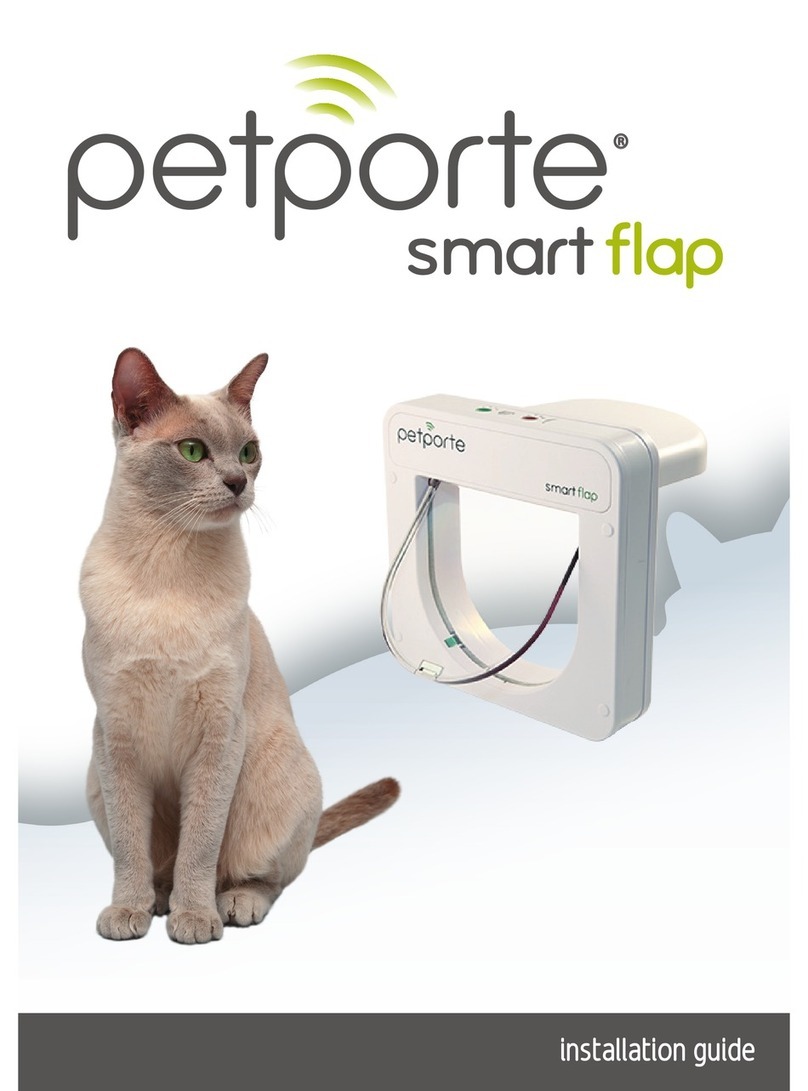
Petporte
Petporte Smart flap installation guide
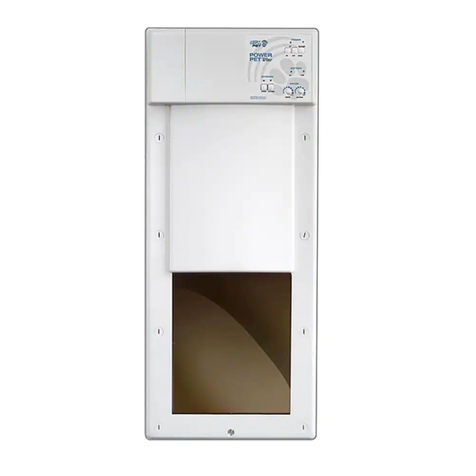
High Tech Pet
High Tech Pet Power Pet PX-1 Installation & operating instructions
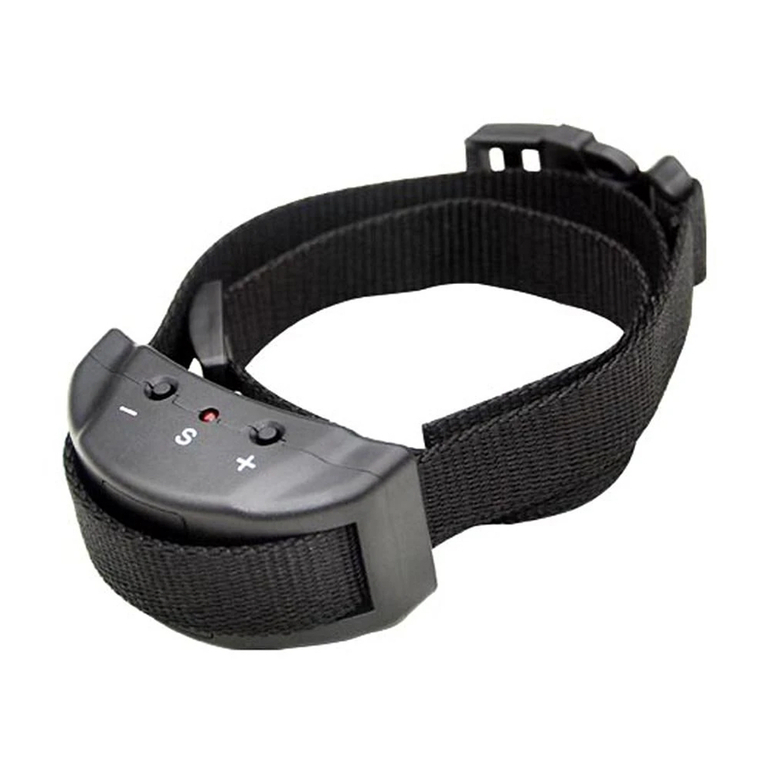
Petainer
Petainer PET853 user manual
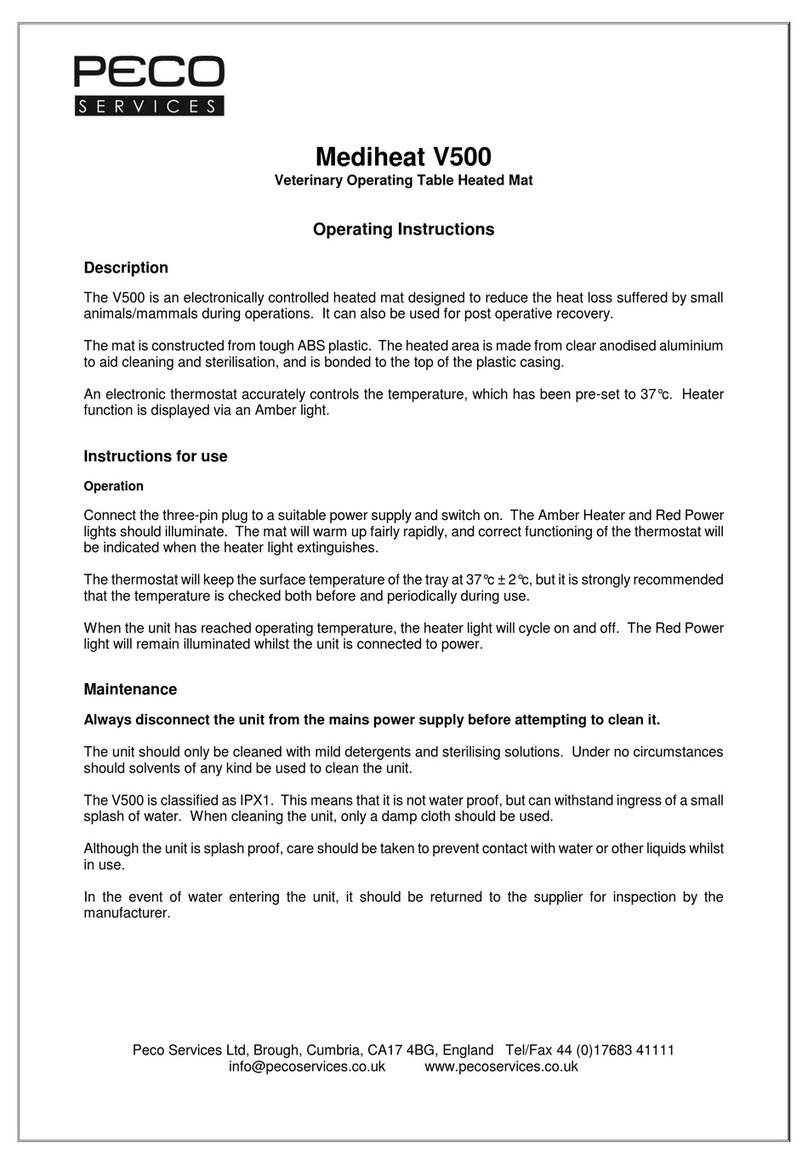
Peco Services
Peco Services Mediheat V500 operating instructions
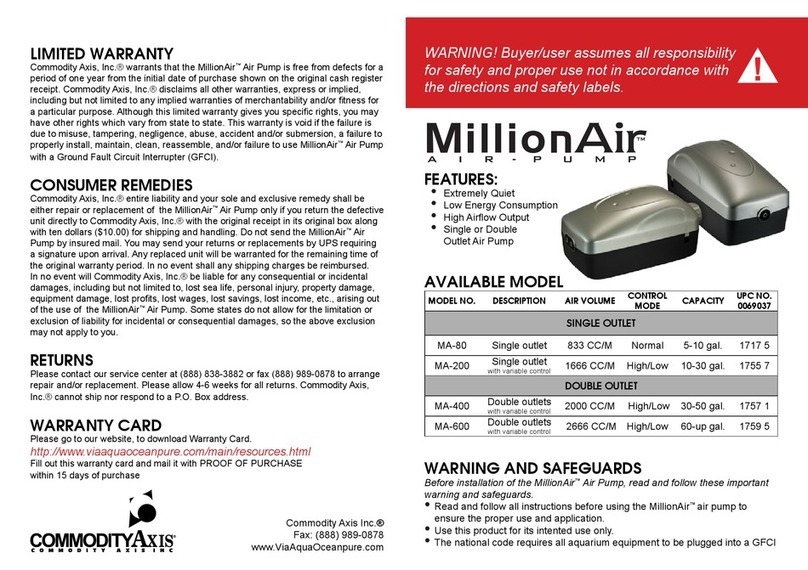
Commodity Axis
Commodity Axis MillionAir user manual
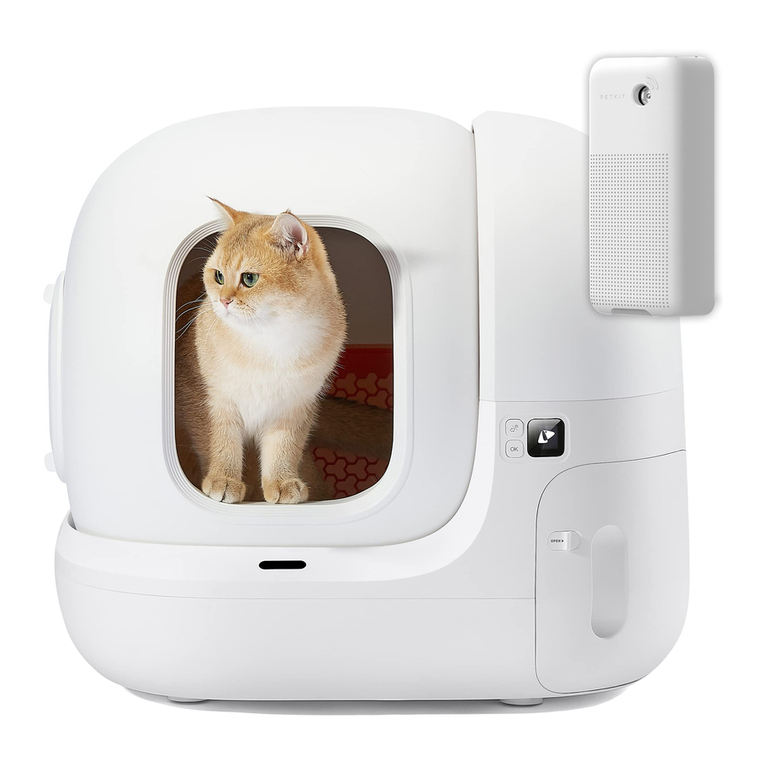
PETKIT
PETKIT PURA MAX user manual
